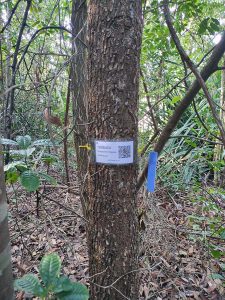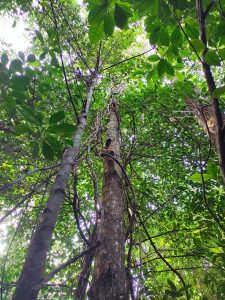46
Tembusu - Cyrtophyllum fragrans (Roxb.) DC. - Gentianaceae [1]
Other names:
General information:
Distinguish botanical characteristics:
Leaf – simple, opposite, thinly leathery to leathery, usually elliptic, distinctly tipped[2]
Flower – cream-white turning yellow on fading, fragrant[2]
Fruit – berry, broadly ellipsoid, red (ripe)[2]
Bark – dark brown, deeply fissured[2]
Uses:
Medicinal uses – the bark – decoction to alleviate fever and to treat dysentery; the leaves and twigs – decoction for treating severe diarrhoea.[2]
Wood – timber – long-lasting and resistant to termites – used in various constructions – bridges, boats, panelling[2]
Other uses:
The tree is planted as landscape plant and for reforestation[2]
Major/bioactive phytochemicals:
Leaf – secoiridoid glycoside – swetiamarine – antihyperlipidemic, hypoglycemic, insulinotropic[3]
Flower – essential oil – himachalol, occidol, grandiflorene – antioxidant, antibacterial[4]
Fruit – alkaloids – gentialutine, gentianine, isaindigotone[5]
Stem bark – lignan – fragraeanolide[6]
References:
[1] https://www.mybis.gov.my/sp/61811
[2] https://www.nparks.gov.sg/florafaunaweb/flora/2/8/2895
[3] Bangprapai et al., 2016, Bulletin of Health, Science and Technology, 14(2), 13-18.
[4] Pripdeevech & Saansoomchai, Chiang J. Sci., 2013, 40(2), 214-223.
[5] Basir et al., Indones. J. Fundam. and Appl. Chem., 6(3), 2021, 64-68. doi: 10.24845/ijfac.v6.i3.64
[6] Rattanaburi et al., 2022. Natural Products Research, 36(7), 1851-1856.
[7] http://tropical.theferns.info/image.php?id=Fagraea+fragrans
SK & NMH, 2022


